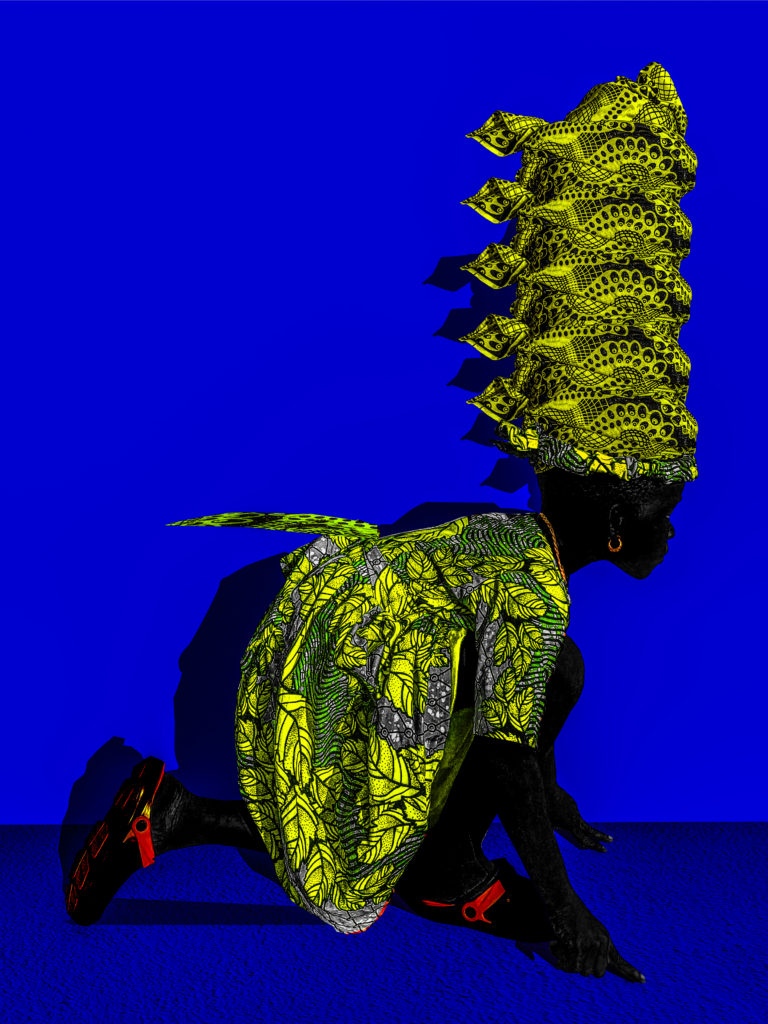The value of African art in the international market has reportedly more than doubled to $72 million.
At various times in the latter-day stages of its chameleonic three-billion-year life, it’s been known as Epher, Ophir, Ham, Corphye, and Faraqa. It’s been Alkebulan: ‘the mother of mankind’. This womb of creativity is Also Known As Africa, itself the mischievous title of an annual art and design fair returning for its ninth edition from October 18 to 20 at Le Carreau du Temple, Paris.
“Also Known As Africa is an open-ended question to all artists, art lovers, curators, collectors and professionals to join the conversation about what is each and everyone’s Africa,” says Victoria Mann, the fair’s founding director. “It’s about making no assumptions, and embracing everyone’s unique vision.”

The fair features 37 exhibitors and over a hundred artists, with a “particular focus” on the ultra-marine scene.
“We created AKAA with the intention of presenting artists defined not by their location, but by the link to the African continent they highlight in their art practice,” says Mann. “These links go above and beyond borders. Highlighting the Caribbean and West Indies territories is in line with this approach, and we are thrilled to include talents who very naturally find their place alongside the diverse line-up of artists showcased at the fair.”
Loading...
These wider cross-continental conversations reach out into the diaspora, facilitating a de-colonization of the creative ‘supply chain’ by supporting a multiplicity of perspectives. “Over the past nine years, we have seen incredibly compelling and innovative ways we can see contemporary African art from an angle that highlights these conversations through curatorial practices, residency programs, and within the market,” she says. “More contemporary artists from Africa are joining international galleries, who have a diverse roster of artists, and several galleries that specialized in the African contemporary art scenes are now working with artists from other parts of the world, creating that dialogue internally.”
In the 10 years since AKAA’s inception, the value of African art in the international market has more than doubled to $72 million, as biases about the nature of African art have shifted and matured into a more nuanced understanding of its diversity and breadth. “Our aim was to offer an economic and cultural platform that would contribute to the development and rise of this market, and that would allow the French public to understand and appreciate these art scenes without cliché or preconceptions,” Mann says. “This is no longer an emergent market, but one that is stable, and growing stronger. Galleries that participated in AKAA as their first international fair now travel the whole world, and young artists who were presented for the first time in Paris have been acquired by major collections.”
The venue, a covered market close to the 800-year-old enclosure where the royal family were held captive during the French Revolution, was an important curatorial choice that gives larger installations room to breathe and interact with the exhibition space.
“From the very start, the Carreau du Temple, with its urban metallic structures and high ceilings allowing natural light to pour in, was the ideal canvas to welcome a monumental installation,” she says. This year’s installation is by Malam, a Paris-based artist from Cameroon “whose work brings about a dialogue between the memory carried by discarded objects, and the consequences of overconsumption our modern-day society faces”.
This is a freedom not only of artistic scale, but to be and name oneself, celebrated in the country of liberation.
“I don’t believe that any artist today wishes to be qualified by where they come from, but rather by what they do,” Mann says. “It’s a much more dynamic, contemporary, and rich way to present these art scenes.”
Loading...
